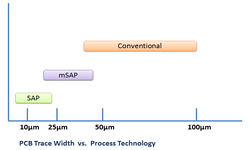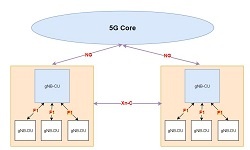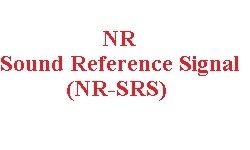What is Sub-6 GHz & mmWave in 5G and Why mmWave bands are required?
As we all know, we have cell phone towers or antennas placed all around us which provide our phones with the coverage they need to keep us connected to the network. These cell phone towers are placed at specific locations chosen by the operator depending upon the range one tower covers. These towers radiate the signals at predefined frequencies, which are also called cellular frequencies, and usually referred to as bands. Lower the frequency of these signals, higher is the geographical coverage, but lower is the downlink speeds.

In 5G technology, two kinds of frequency bands are classified. First are Sub-6 GHz bands where the frequency transmitted from cell phone towers are less than 6GHz frequency. This is very similar to 4G, where the frequencies transmitted from cell phone towers are below 6GHz.
On the other hand, the higher speeds that really set 5G apart from any of the 4G LTE flavors require mmWave (millimeter wave, above 24GHz) high-frequency bands. These high frequencies have very large bandwidths, so they’re ideal for keeping everyone connected in busy environments like stadiums.
So in 5G, these two types of frequency ranges have been defined as:
- Frequency Range-1 (Sub-6 GHz, less than 6GHz)
- Frequency Range-2 (mmWave, above 24GHz)
5G frequency bands listed down here:
Why mmWave frequencies in 5G
Living in the space above 24Ghz, millimeter wave 5G has access to huge chunks of data allowing speeds in excess of 1Gbps. Referred to as high-band by the FCC, and mmWave by Qualcomm and AT&T, this is the current spectrum utilized by Verizon for 5G as well as part of T-Mobile and AT&T’s 5G networks. One issue with these frequencies is immediately apparent when it comes to coverage.
5G in the high-band requires a lot of smaller, lower range cell towers increasing the cost of deployment but also allowing for a far larger number of connections in dense urban areas. While millimeter wave highlights the benefits of 5G immediately with its immense speed and capacity, as time goes on, a combination of all of the above will make up the future of 5G coverage.
5G Device support
Previously, consumers had to choose between mmWave or sub-6 GHz for 5G smartphones, but support for both is key as all of the major carriers plan to use multiple spectrum bands for their 5G services.
Expectation is that by the end of the first quarter of 2020, there will be smartphones that support both millimeter wave and sub-6 GHz.
Like Samsung Electronics recently introduced its new Galaxy S20 5G lineup of smartphones, including two 5G models that are the first capable of tapping both sub-6 GHz and millimeter wave spectrum bands.
Summary
A sub-6 band 5G technology will be able to cover a larger geographical area for 5G coverage, but will not be able to provide higher speed downlink. But an mmWave 5G technology will be able to provide class leading downlink speeds, but at the cost of less geographical area coverage. Now you know the difference and will be able to understand the network strategy of your carrier when you decide to switch over to 5G.



